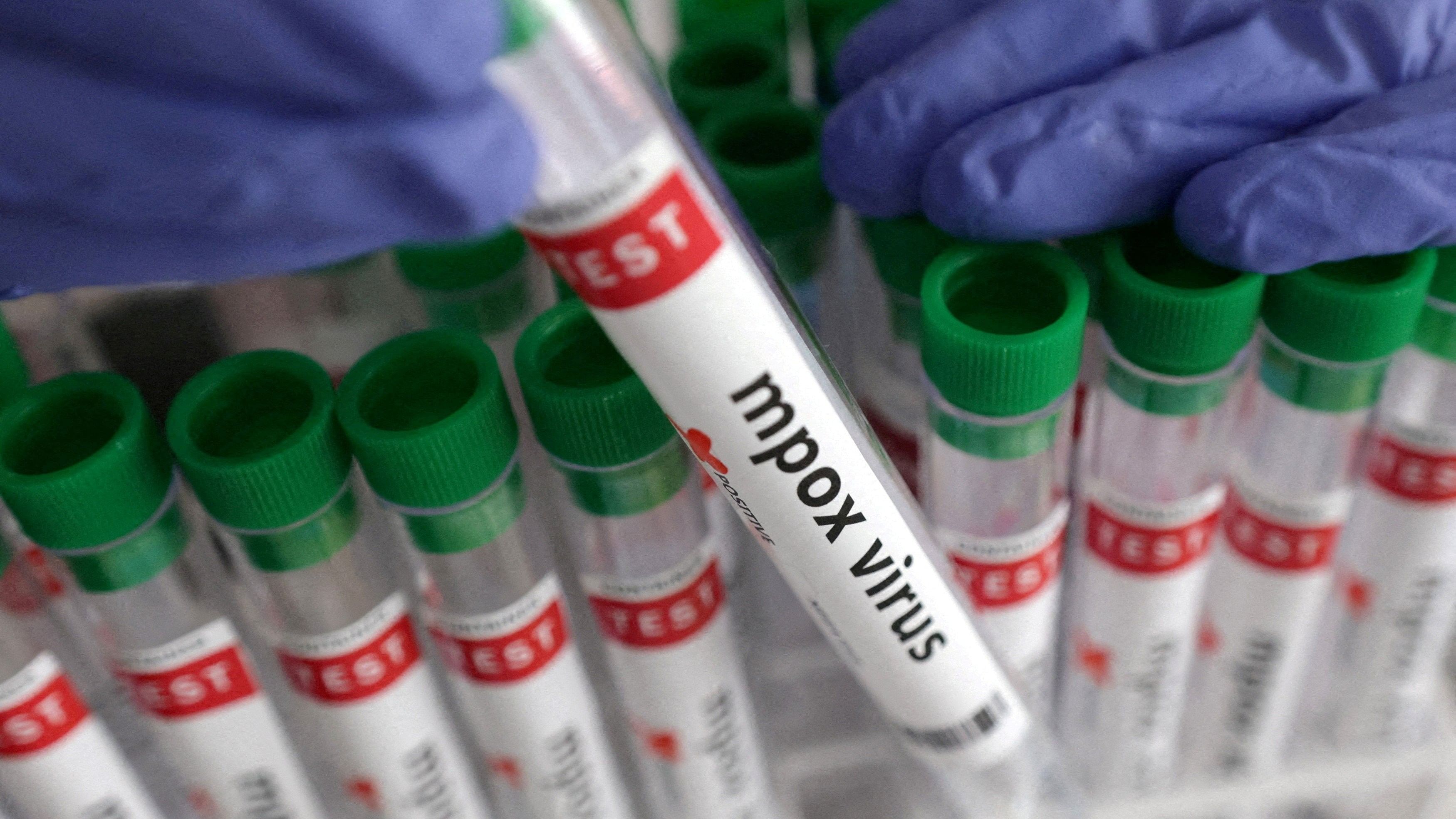
A test tube labelled "Mpox virus positive" is held in this illustration taken August 20, 2024.
Credit: Reuters Photo
New Delhi: India on Monday reported its first confirmed Mpox case in a young male with the Union Health Ministry asserting that the individual carries a non-emergency variant of the virus and “there is no indication of any widespread risk to the public at this time.”
The ministry asked the states to ensure “undue panic” is not spread on monkeypox cases but they should remain alert and sensitise the healthcare workers to identify the symptoms of such infection.
“The previously suspected case of Mpox (monkeypox) has been verified as a travel-related infection. Laboratory testing has confirmed the presence of Mpox virus of the West African clade-2 in the patient,” a spokesperson said here.
The individual, a young male who recently travelled from a country experiencing ongoing Mpox transmission, is undergoing treatment at an isolation facility at All India Institute of Medical Sciences here.
The patient remains clinically stable and is without any systemic illness or co-morbidities.
“This case is an isolated case, similar to the earlier 30 cases reported in India from July 2022 onwards, and is not a part of the current public health emergency (reported by WHO) which is regarding clade-1 of Mpox,” the spokesperson said.
The case aligns with earlier risk assessments and continues to be managed according to established protocols. Public health measures, including contact tracing and monitoring, are actively in place to ensure the situation is contained.
The confirmation comes on a day when the ministry reached out to the states to sensitise the health workers, particularly those working in STD clinics and with HIV/AIDS patients as more than half of the monkey pox patients worldwide are HIV infected.
“But it is crucial that any undue panic amongst the masses is averted,” Union Health Secretary Apurva Chandra wrote in his letter to the states.
The World Health Organisation on August 14 declared that the current outbreak of Mpox following a continuous rise of cases in Congo in the last six months and the spread of the disease to other east African countries like Burundi, Kenya, Rwanda and Uganda. The emergency is caused by a new variant (Clade-1b) of the virus.
The UN health body noted that the clinical features of the infection remain the same. It affected young males between 18-44 years with symptoms of systemic or genital rash followed by fever. The commonest mode of transmission is sexual contact followed by person-to-person non-sexual contact.
